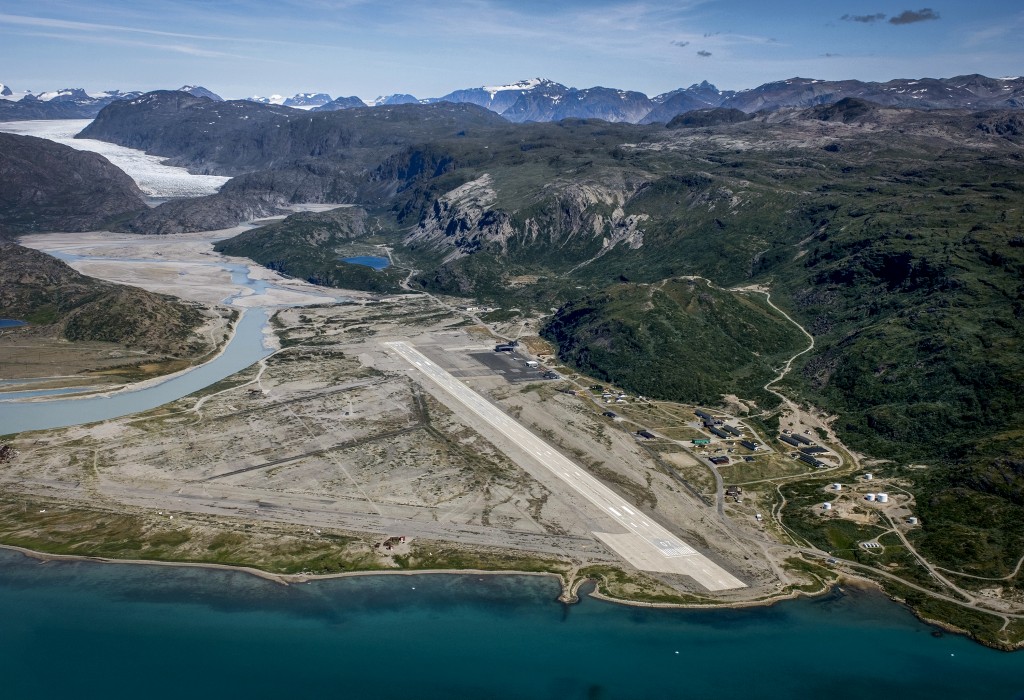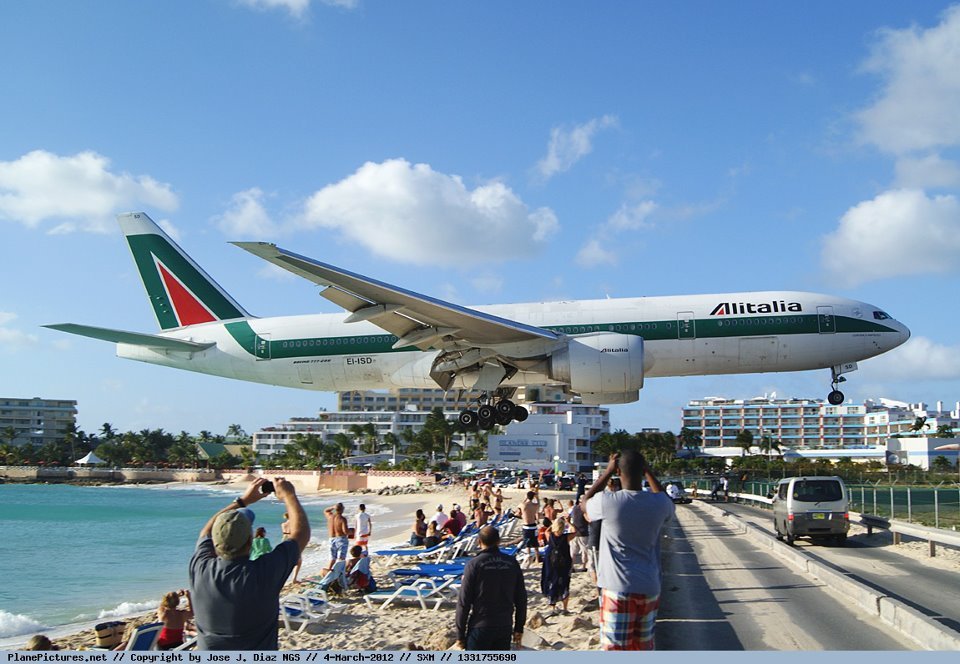In 2010, the History Channel developed a list of the ten most extreme airports around the world, based on dangerous terrain and poor runway construction. Many of these constitute the most dangerous airfields but not all, as extreme is plainly a broader classification than dangerous. So which are actually the most dangerous?
12. Qamdo Bamda Airport, Tibet

As yet, no accidents have occurred here, but this is still a place to avoid. At 14,000 feet, the thin oxygen strains the engines and tries even the greatest pilot’s talents, as the elevation lessens the thrust power of the plane. Staff warn passengers to exit slowly. They might otherwise fall due to the wooziness produced by lack of proper air.
11. Gibraltar International Airport, Gibraltar

Here, every landing is a traffic-stopping event. The runway crosses Main Street! On another list than the ten most extreme airports, the History Channel ranked this airport as the most risky in Europe. Pilots must brake the instant the plane contacts the earth because otherwise everyone and everything would race into the deep blue sea at the end of the oh-so-short runway. Unique wind patterns and other weather conditions worsen the matter - battering planes and passengers swooping into port. They cause worse things than turbulence, too. Despite all this, however, the airport has never experienced a major accident.
10. Paro Airport, Bhutan

Passengers are reported to take anti-anxiety meds before landing here, and for good reason, considering that merely 8 pilots are qualified to do so. In fact, only the Druk Air airline was permitted to fly here until 2011. The airport still only allows flights under visual meteorological conditions, never at night, and planes have to weave between mountains and houses, coming within feet of the latter. On top of all these difficulties, add the 6,500 foot runway. So read the small type of your travel insurance policy before you fly through here. At least one crash has been reported here.
9. Narsarsuaq Airport, Greenland

Even on calm days, planes flying in suffer extreme turbulence and wind shear. What makes this so serious is that arriving aircraft must fly through a fjord where pilots must make precise 90 degree turns to line up with the runway while in the “valley,” and at some point during this turn, wind will hit the craft from one side and speed it down to the airport. Plus, downdrafts and icebergs surround the place. Flyers new to the local topographical and meteorological conditions should not fly here through the fjords. Yet there have only been two accidents in the Narsarsuaq airport.
8. Princess Juliana International Airport, Saint Martin

This airport was made famous by pictures of low flying aircraft published in several news magazines worldwide. Since the approach to runway 10 is over water, pilots using visual flight rules may lose their sense of altitude. As if that were not enough, the airport offers no security services to save you from terrorists and maniacs. Three accidents have occurred here, and the History Channel lists this airport as the fourth most extreme in the world.
7. Eagle County Regional Airport, U.S.

This airport does not use standard Instrument Landing systems, causing all aircraft to follow visual flight rules, use LDA approaches, and operate distance measuring equipment. Departing airplanes make immediate left turns to avoid the surrounding mountains and Gypsum, Colorado. High elevation and extreme weather variability complicate the task exceedingly. Eighth on the History Channel’s list of Most Extreme Airports, three accidents have occurred “at or near” it, to use officialese.
6. Madeira Airport, Portugal

Three accidents have occurred here, too, and the runway here is the real danger of the place. In 2000, it was extended high over the Atlantic Ocean for a half mile in order to accommodate jet liners. Being between water and hills, landing airplanes experience such great turbulence that high winds and storms still close the airport to jet liners during the winter. Collectively, the narrow runway, the water beneath, the hills to the side, and the shaking plane make this airport a fearful place.
5. Wellington International Airport, New Zealand.

Like the Gibraltar airport, the runway here appears to extend into the ocean. Nearby, Cook Strait worsens matters by channeling strong, gusty winds into the airport zone - particularly in prefrontal north westerly conditions. Add to all this that the runway lasts for only 6,351 feet, and you will understand the terrors of the place. There have been four accidents. For these reasons, some advise that only locals should fly here; its four-star rating may be due to those customers.
4. Gustaf III Airport

The History Channel rated this airport 3rd most extreme in the world. Situated at the end of a gentle slope with a hill and a beach on the ends, the notorious 2,133 foot runway has caused four accidents and numerous close calls. Much high wind passes through the airport, and sunbathers cover the beach. Only small aircraft - regional commercial planes and charters carrying a maximum of 20 passengers - dare fly here, and even they must fly very close to houses, cars, and people.
3. San Diego International, U.S.

Six accidents have occurred here, one so extreme as to cause all airports ever afterwards to introduce terminal control areas. Mountains surround the northern and eastern sides of the airport and Mexico claims airspace to the south, while western tailwinds sometimes induce nose-to-nose takeoffs and landings at the steepest descent angle in the country. The History Channel, backed by an area safety coordinator for the Air Line Pilots Assn., stated that the 100-foot high parking garage near the end of the runway shortens planes’ path by 1,800 feet
- when considering all the natural obstacles as well. One pilot described the steep approach over Balboa Park and downtown San Diego as landing in a shoe box. Small wonder this is the tenth most extreme airport in the world.
2. Toncontin International Airport, Honduras

Especially in the often-inclement weather, the approach is the most difficult in the world - for all aircraft. Boeing 757s are usually the largest aircraft to land at Toncontin, given the mountainous terrain and one of the world’s shortest runways. The landing distance is 5,442 feet, and pilots may also find themselves unprepared for the fast, turbulent, crooked approach, the sharp turn towards the end, and all the adjustments needed to fight the wind. Don’t forget the twisty ravine prior to the runway, either.. With ten accidents and 160 resulting fatalities, the History Channel ranked this the second most extreme airport in the world.
1. Lukla Airport, Nepal

The 2,000 foot, uneven runway ends in a fence, for protection from the mountain cliff. Only helicopters and Twin Otter kinds of planes can manage it. Takeoffs are said to be particularly awful, with the end 9,514 feet in the air. They also involve following the runway downhill, where it disappears into a valley, into which a plane could drop if it had not gathered quite enough speed. Labelled the most extreme airport worldwide, 13 accidents have taken place “at or near” the Lukla airport.